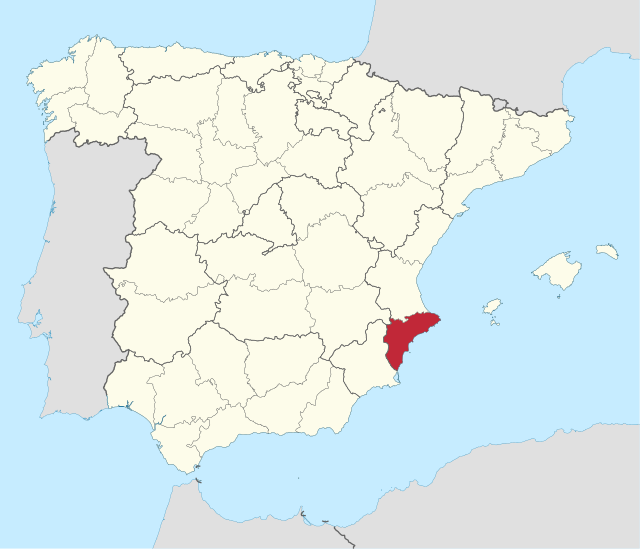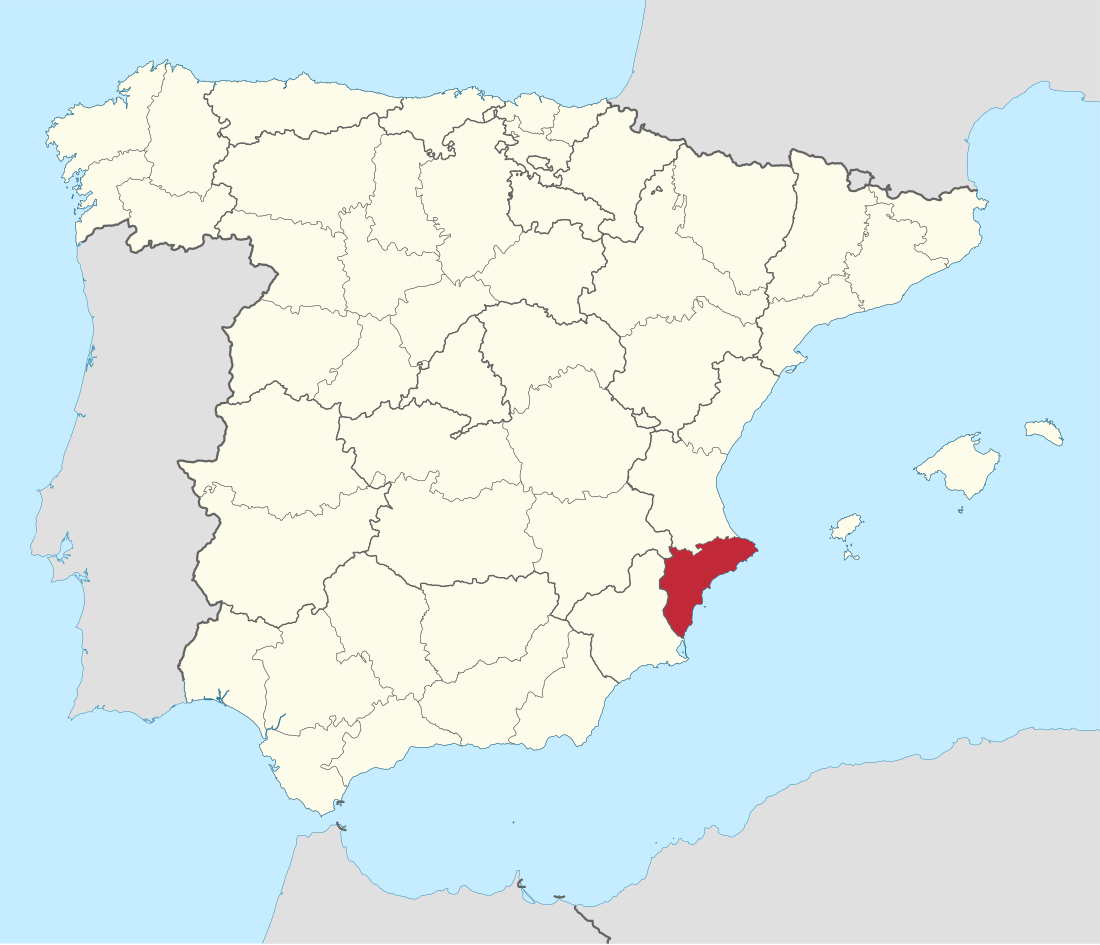Top Qs
Timeline
Chat
Perspective
List of municipalities in Alicante
From Wikipedia, the free encyclopedia
Remove ads
Alicante (Alacant in Valencian) is a province in the autonomous community of Valencia, Spain, that is divided into 141 municipalities. As of the 2023[update] Spanish census, the province is the 5th largest by population, with 1,952,291 inhabitants,[1] and the 41st largest by land area, spanning 5,817 km2 (2,246 sq mi).[2] Municipalities are the basic local political division in Spain,[3] and can only belong to one province.[4] They enjoy a large degree of autonomy in their local administration, being in charge of tasks such as urban planning, water supply, lighting, roads, local police, and firefighting.[5]


The organisation of municipalities in Spain is outlined in a local government law (Spanish: Ley 7/1985, de 2 de abril, Reguladora de las Bases del Régimen Local; transl. Law 7/1985, of 2 April, Regulating the Bases of the Local Administration) passed on 2 April 1985[6] and finalised by an 18 April 1986 royal decree.[7] The Statute of Autonomy of Castilla–La Mancha also contains provisions concerning the relations between the municipalities and the autonomous government of Castilla–La Mancha.[8] All citizens of Spain are required to register in the municipality in which they reside.[9] Each municipality is a corporation with independent legal personhood: its governing body is called the ayuntamiento (municipal council or corporation),[10] a term often also used to refer to the municipal offices (city and town halls). The ayuntamiento is composed of the mayor (Spanish: alcalde), the deputy mayors (tenientes de alcalde) and the plenary assembly (pleno) of councillors (concejales).[11] Municipalities are categorised by population for the purpose of determining the number of councillors: three when the population is up to 100 inhabitants, five for 101–250, seven for 251–1,000, nine for 1,001–2,000, eleven for 2,001–5,000, thirteen for 5,001–10,000, seventeen for 10,001–20,000, twenty-one for 20,001–50,000, and twenty-five for 50,001–100,000.[12] One councillor is added for every additional 100,000 inhabitants, with a further one added when the number of councillors based on this methodology would be even in order to prevent tied votes.[13]
The mayor and the deputy mayors are elected by the plenary assembly, which is itself elected by universal suffrage.[14] Elections in municipalities with more than 250 inhabitants are carried out following a proportional representation system with closed lists,[13] whilst those with a population lower than 250 use a block plurality voting system with open lists.[15] The plenary assembly must meet periodically at the seat of the ayuntamiento, with meetings occurring more or less frequently depending on the population of the municipality: monthly for those whose population is larger than 20,000, once every two months if it ranges between 5,001 and 20,000, and once every three months if it does not exceed 5,000.[16] Many ayuntamientos also have a local governing board (Spanish: junta de gobierno local), which is named by the mayor from amongst the councillors and is required for municipalities of more than 5,000 inhabitants.[11] The board, whose role is to assist the mayor between meetings of the plenary assembly, may not include more than one third of the councillors.[17]
The largest municipality by population in the province as of the 2023 Spanish census is Alicante/Alacant, its capital, with 349,282 residents, while the smallest is Tollos, with 40 residents.[18] The largest municipality by area is Orihuela, which spans 365.36 km², while L'Alqueria d'Asnar is the smallest at 1.08 km².[2]
Remove ads
Municipalities
- Largest municipalities in the province of Alicante by population
Remove ads
See also
References
Wikiwand - on
Seamless Wikipedia browsing. On steroids.
Remove ads







